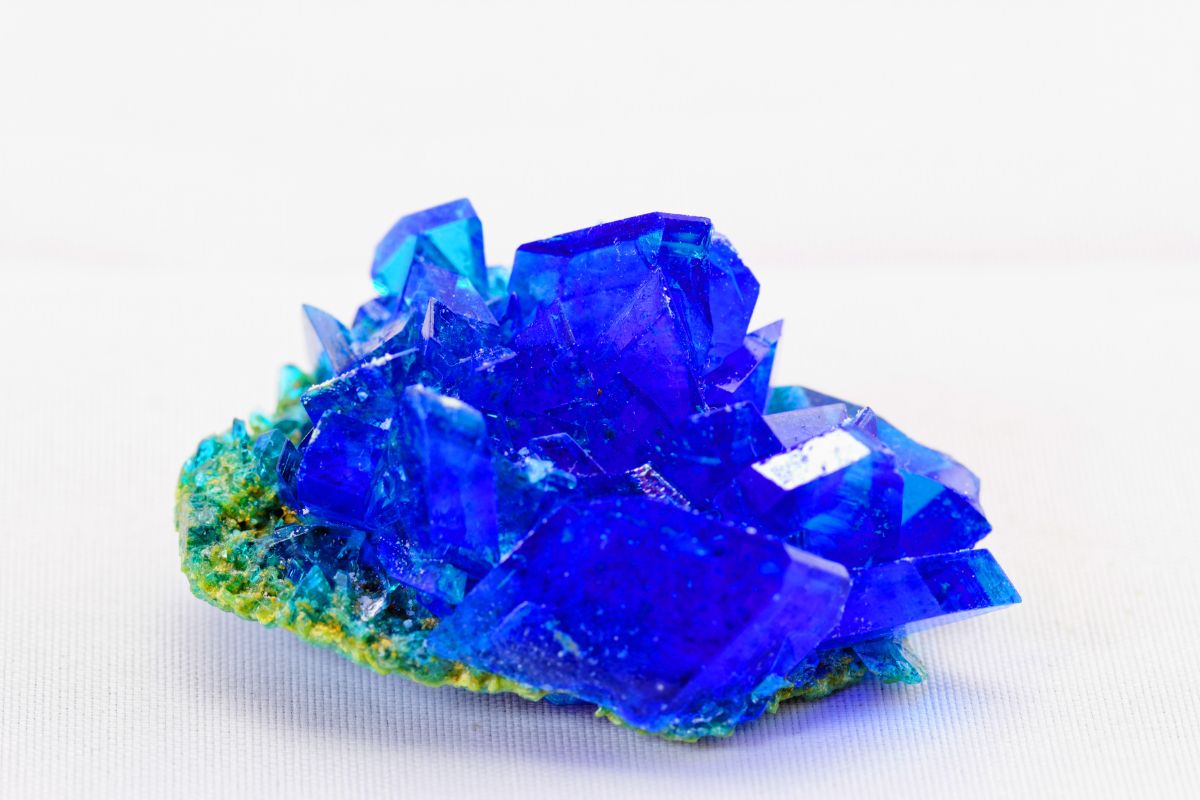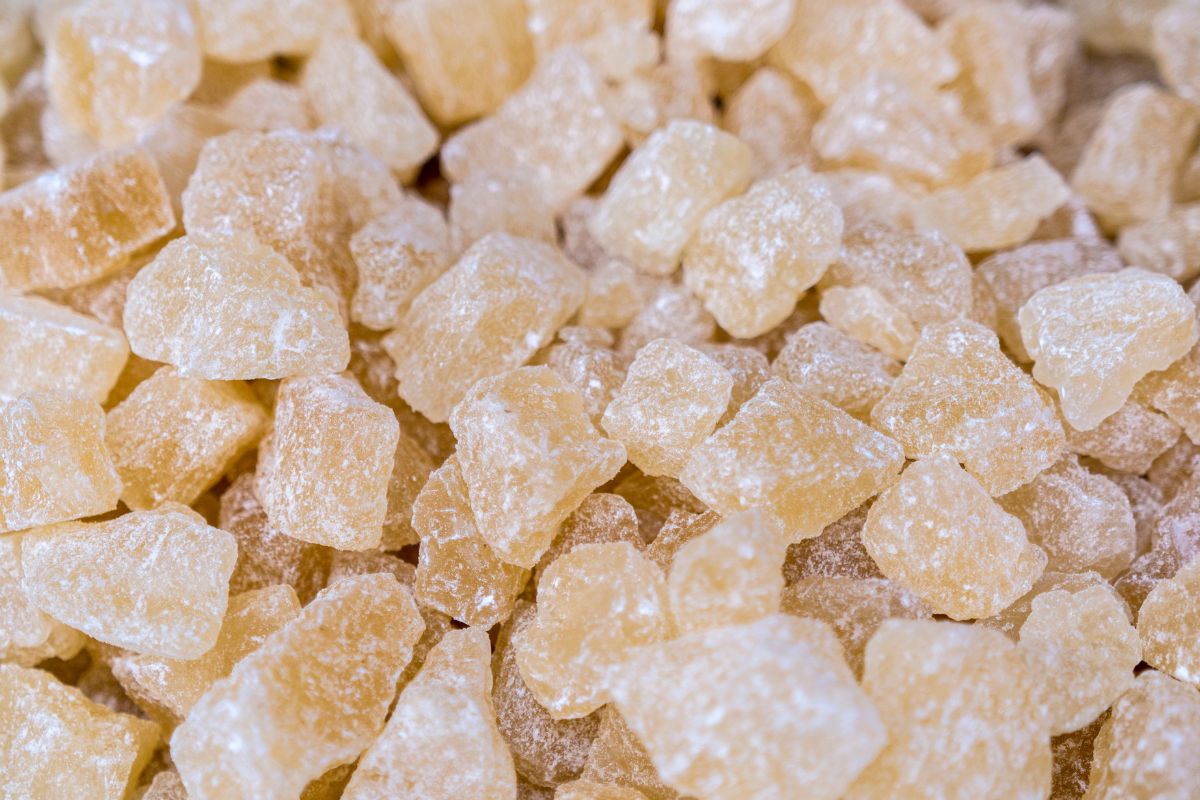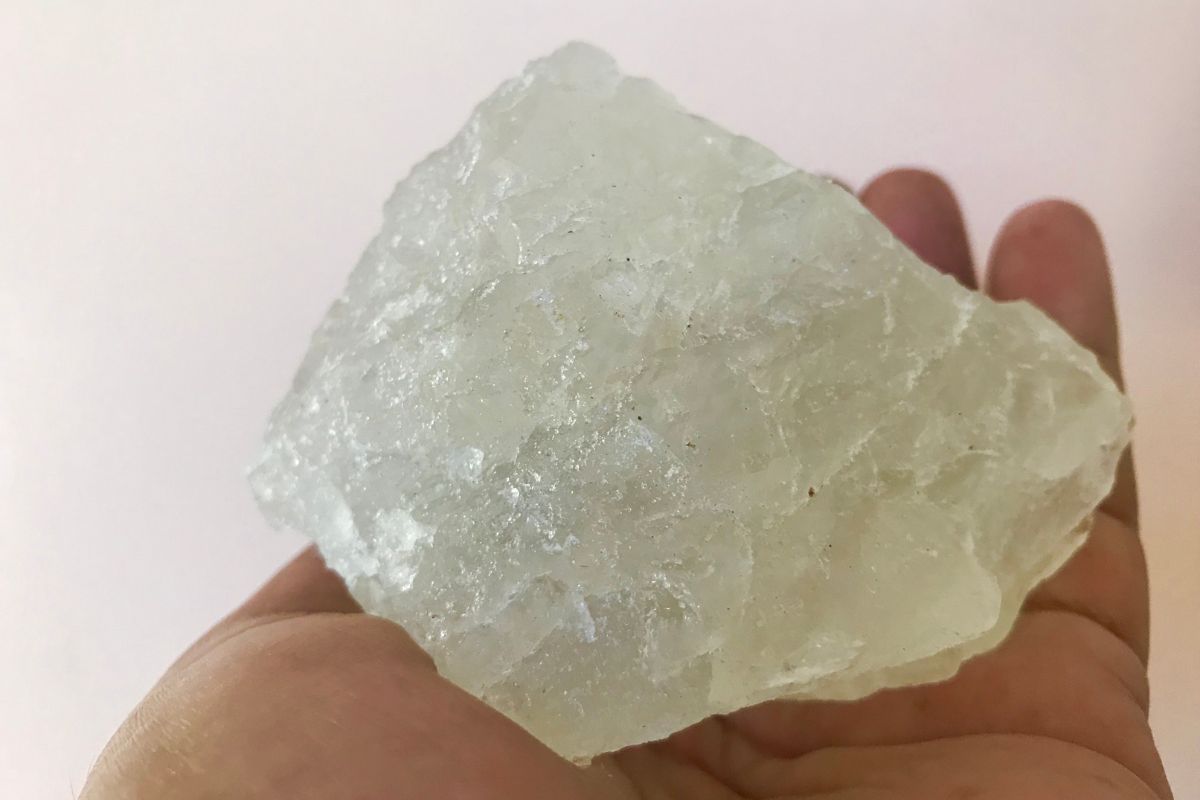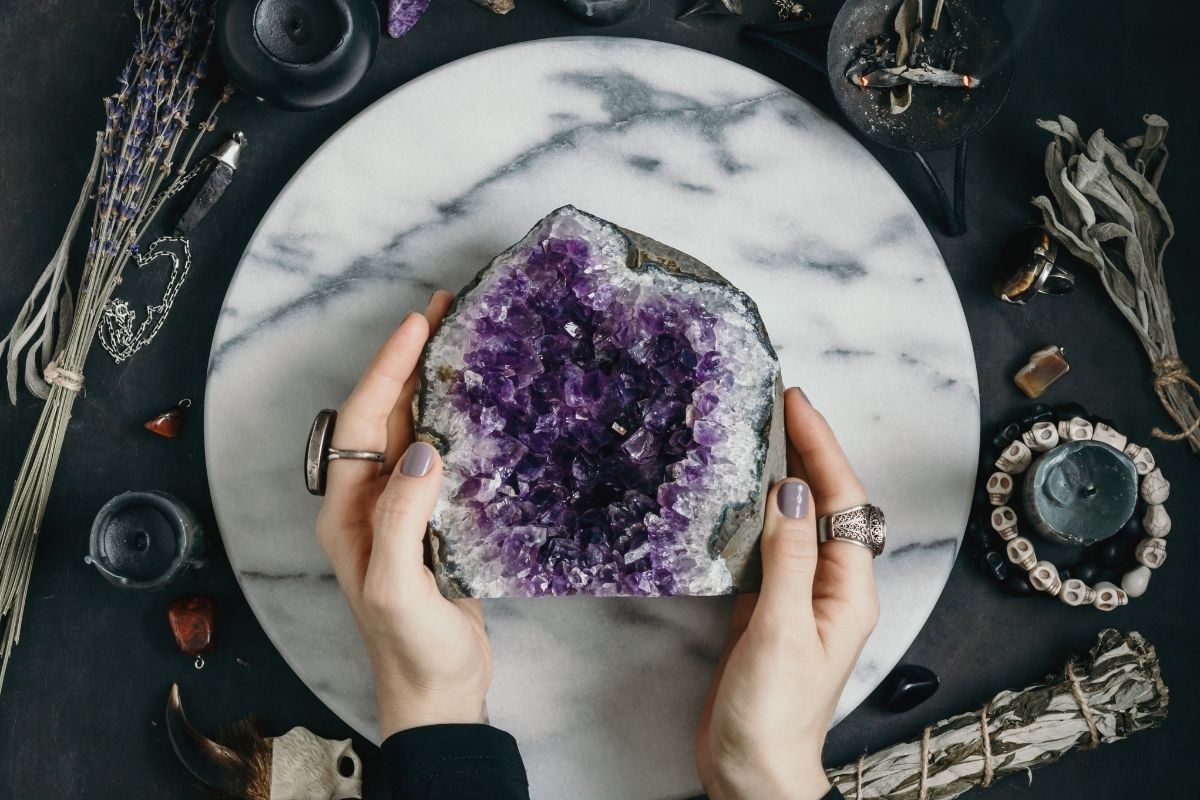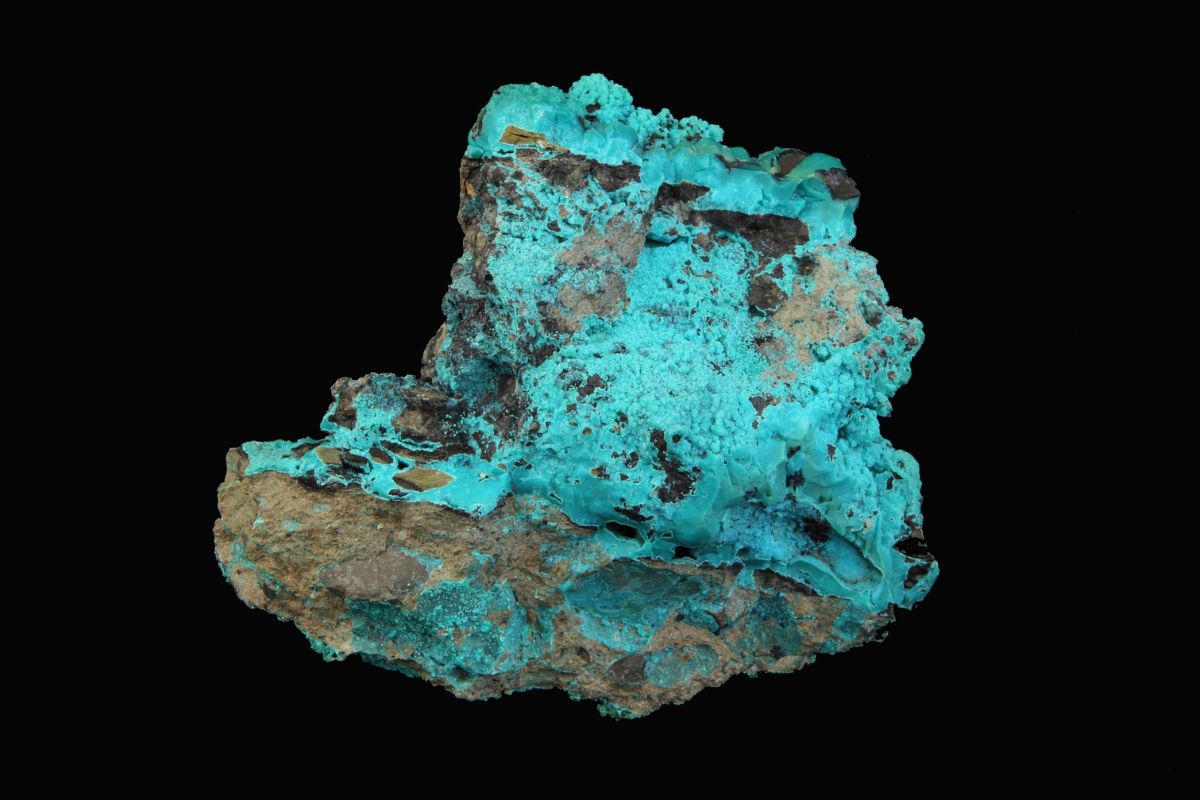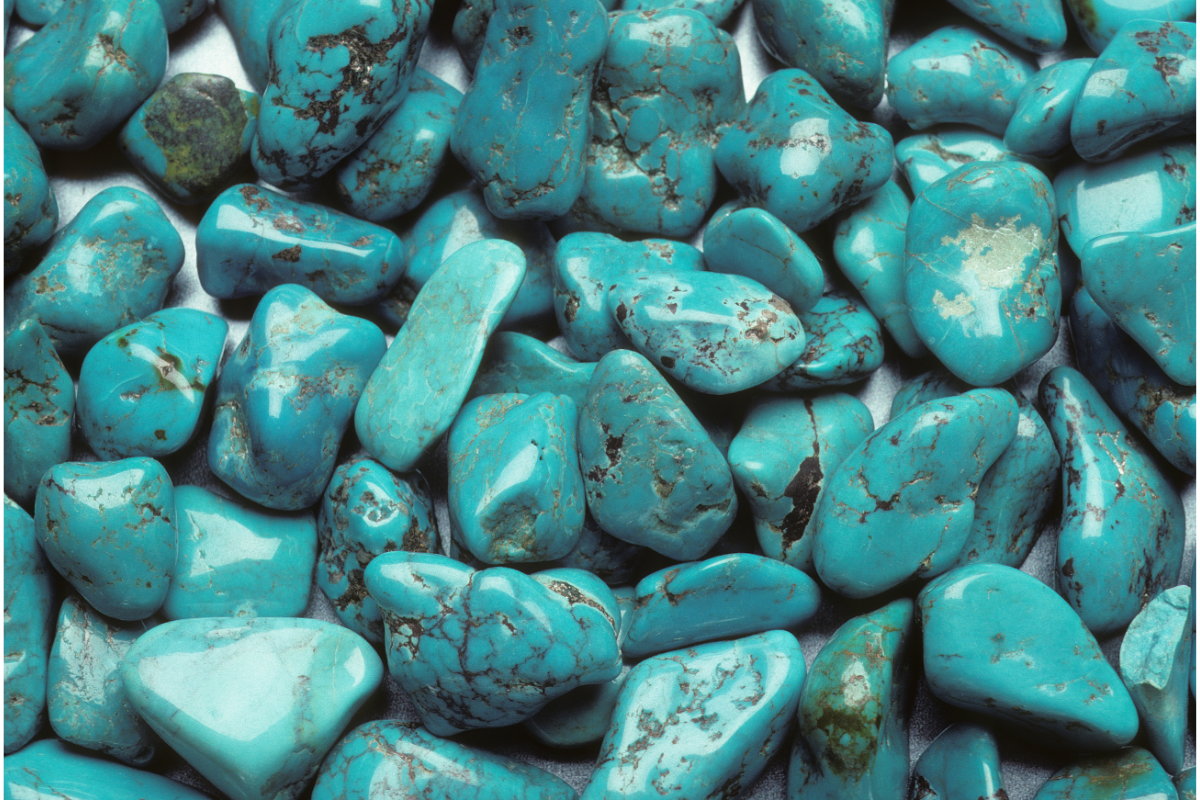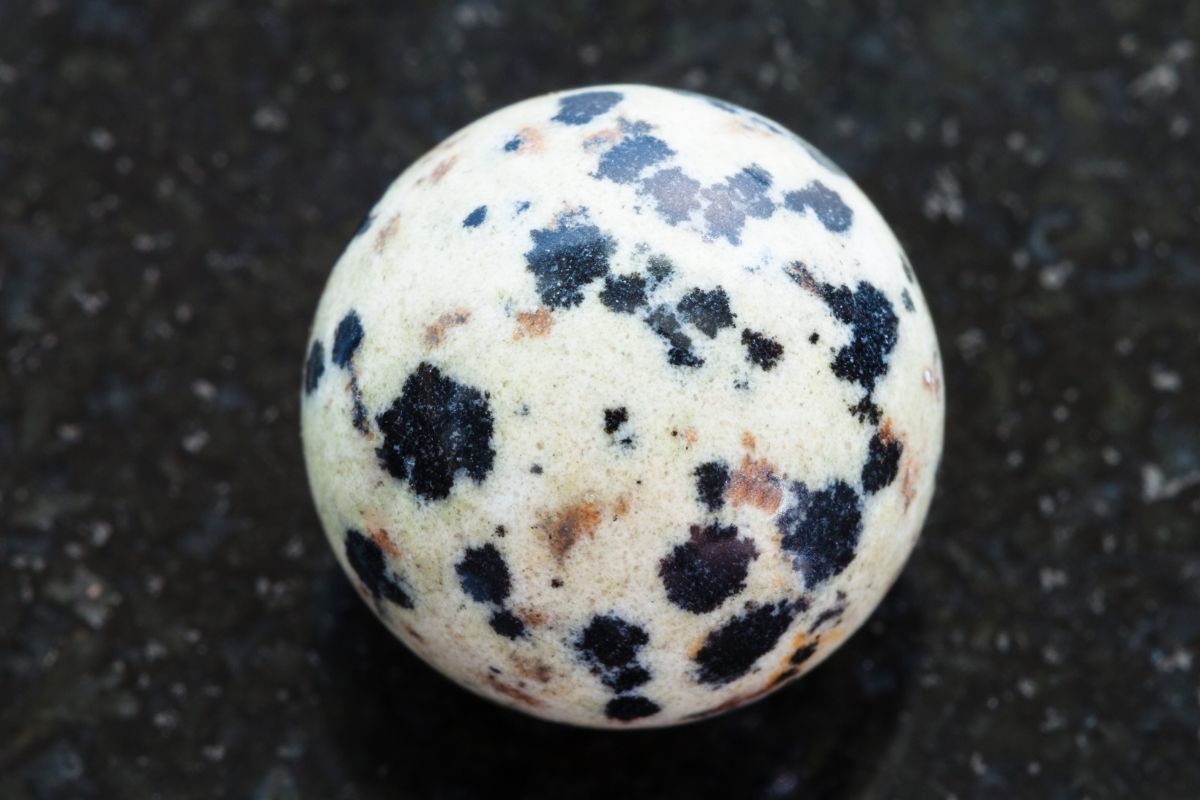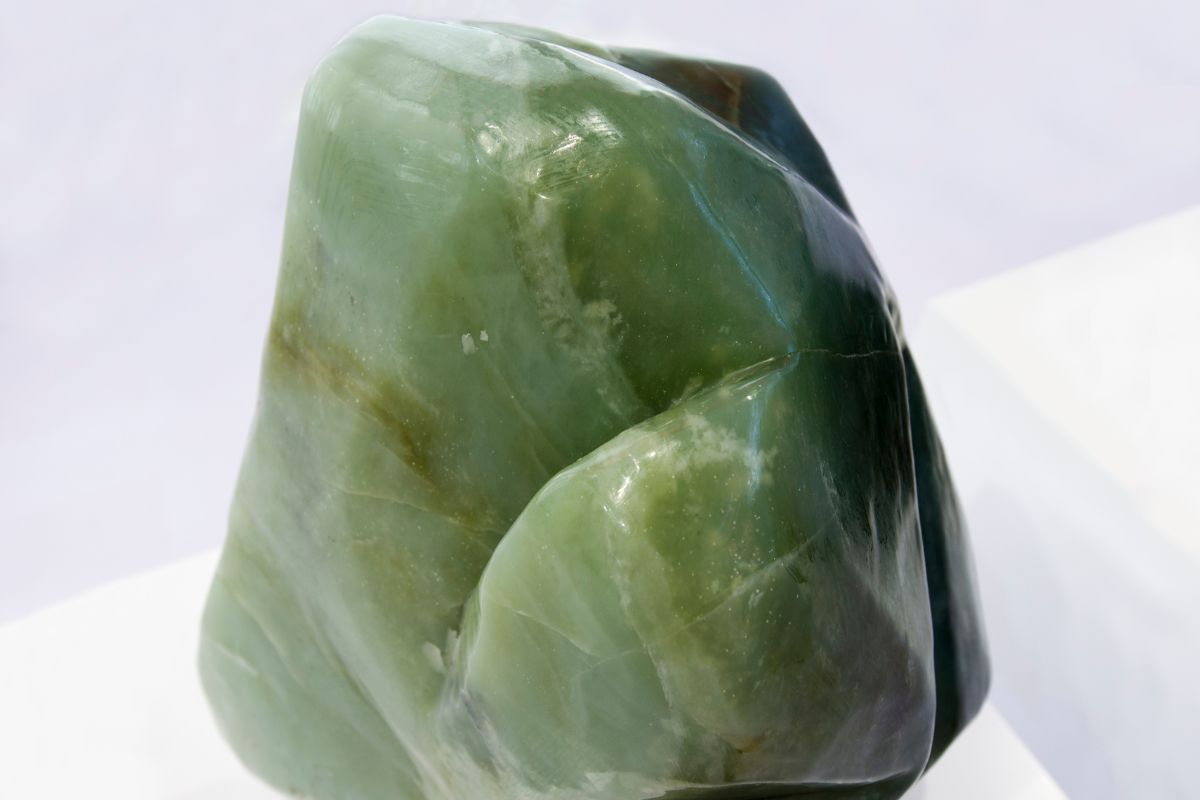Have you ever wanted to grow your own Sodium Chloride crystals at home?
For some, it might seem like it would be a difficult process, and this is mostly true, a lot of tutorials tend to make you believe that growing your own Sodium Chloride crystals is particularly easy, when the reality is that it’s a little more complicated, especially because of the sensitivity of the crystals themselves.
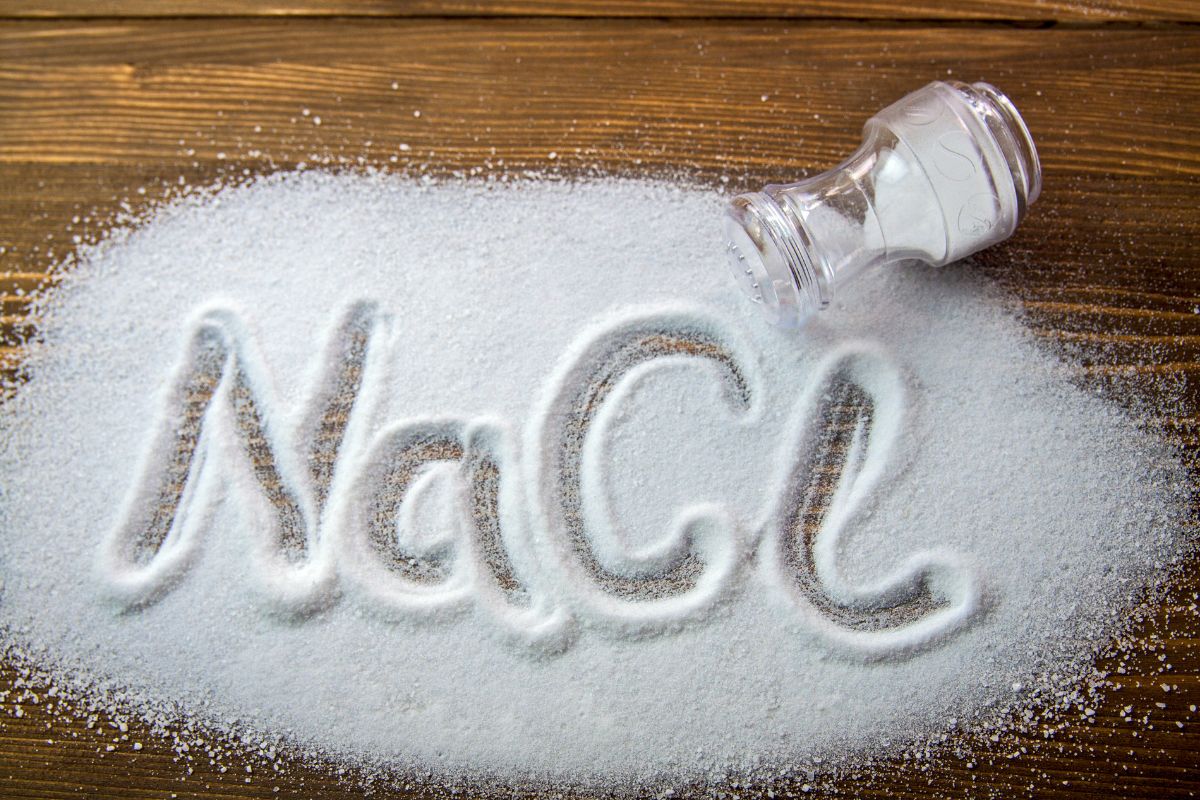
However, with the special technique we’re going to share with you, you should be able to grow your very own Sodium Chloride crystals at home too!
If you didn’t already know, Sodium Chloride is more commonly known to us as salt. That’s right, this is the exact same stuff we add to our food to provide that distinctive taste!
Although, we’re more accustomed to seeing our salt looking more like sand than the cubic crystal structure we’ll be creating.
As we previously mentioned, the Sodium Chloride crystals can be particularly sensitive, especially to changes in temperature, and they’re also known to be prone to crystallizing dust particles, which can lead to unwanted clusters and dried crust too.
So, for the best tutorial for growing your own interesting Sodium Chloride crystals at home, then read through our guide to discover exactly how you can make the best Sodium Chloride crystals, and although our guide might seem particularly long, we promise you that it’s worth reading all the way through!
Materials
Before we begin to go about creating these Sodium Chloride crystals, it’s first important to ensure that you have all of the necessary materials in order for us to make them successfully. So, you’ll need to get:
- Un-iodized table salt
- A large pot (We’ll use this for heating up water)
- A suitable stirring spoon
- A filter funnel
- Filter papers (You can always use tissue paper instead)
- A large jar
- A flat dish
- Flat and small containers
You might find it somewhat difficult to find unionized table salt depending on whether or not you have access to larger stores.
If you can’t find any in your local area, then you can always substitute it for sea salt that has no additives added. We’ve tried and tested it, and have noticed no differences in the end results!
It’s now time for us to begin preparing our saturated salt solution.
Saturated Salt Solution Preparation Guide
The process of growing amazing Sodium Chloride crystals all begins with the creation of a saturated salt solution.
Because Sodium Chloride actually has a solubility of 36g per 100ml of water when at room temperature, it means that by dissolving this amount of salt into water, you then create a saturated salt solution.
When the water is evaporated, the extra salt then needs to make its way out of the solution, which is what leads to the creation of the salt crystals.
Ultimately our aim is to take control of this situation, which means that we are then able to form stunning salt crystals!
So, let’s create the solution we need!
Step 1
For our solution, we’ll first need to get a pot of hot water ready, so add as much water as you’d like to your, but keep a note of how many ml you added, as we’ll need to take this into account when adding the salt. You can then begin to heat up the water.
Step 2
As your water becomes hotter you can begin to add in the unionized salt, ensuring that you add 40 grams of salt for every 100 ml of water you added to the pot.
Once added, use your stirring spoon to stir the water to encourage as much of the salt to dissolve as possible, but don’t worry if there happens to be some left at the bottom of the pot.
Step 3
You need to ensure that you keep heating up the water as you add the salt in.
Once you begin to see small white flakes of salt begin to appear on the surface of the water, then you can stop heating the water, you should then allow your new solution to cool down before closing the lid on the pan. Now leave it alone for a day!
If you’ve created your solution in a metal pot, it’s advisable to transfer it to a plastic or glass container once it has cooled down, as the salt solution can cause some serious damage to the metal if left inside for a long period of time.
Step 4
Once your solution has been left to sit for a day, it should have now stabilized completely, although you’ll notice that there will be portions of excess salt and other impurities, which we’ll now work to get rid of!
This is where our funnel filter and filter papers come in handy, you can simply use the funnel and filter paper to pour the solution from its current container or pot into the large jar, which is where we’ll keep our clean and perfectly saturated salt solution. You can then either discard or reuse the excess and leftover salt as you see fit.
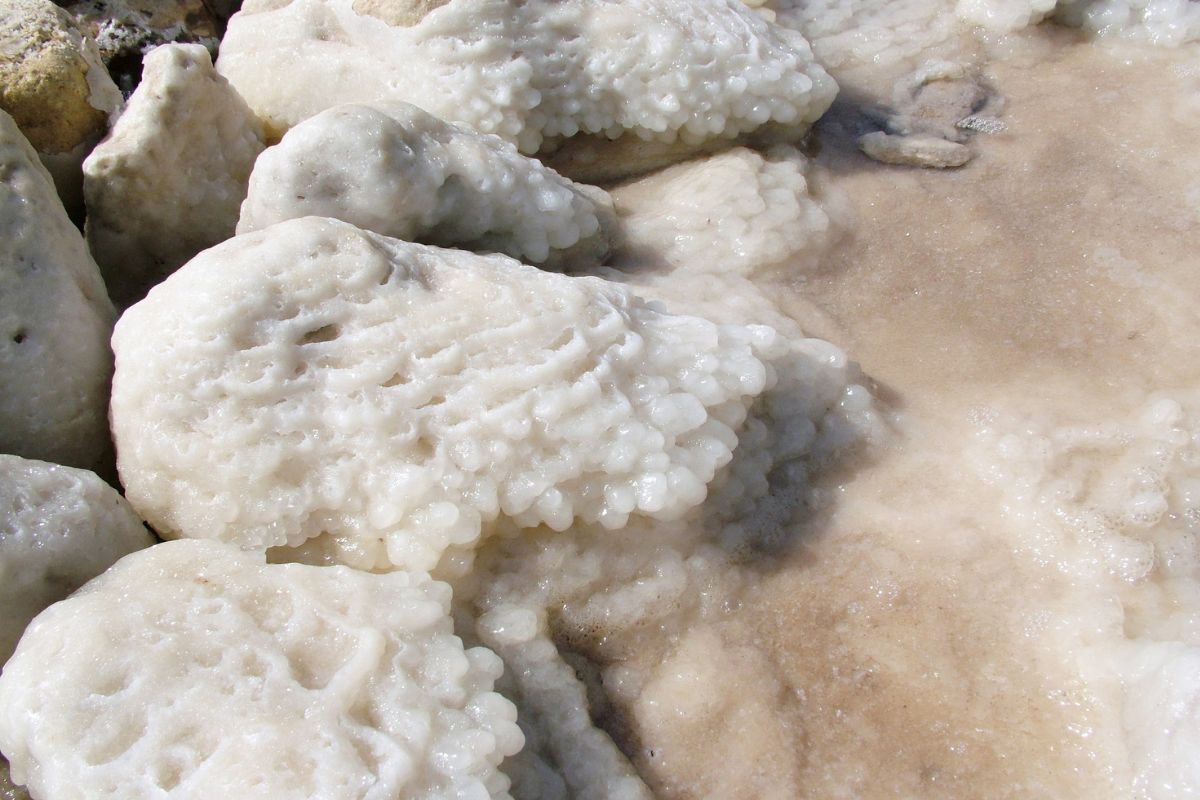
Creating A Seed Crystal
Now that we’ve got our solution, we should be ready to start growing the Sodium Chloride crystals, right?
Not quite, because in order for us to create larger and more impressive crystals, we’ll first need to create and grow a crystal seed (see also ‘How Do You Grow Copper Sulfate Crystals‘).
A crystal seed is essentially just a super small perfect Sodium Chloride crystal, from which we can then create the big Sodium Chloride crystals we want!
Creating a seed crystal is super easy, simply measure out 50 ml of the perfect saturated solution into the small flat dish you prepared beforehand (we definitely recommend a petri dish for this).
Keep in mind that you don’t need to entirely fill the dish, just until the liquid is 1 cm deep in the dish.
Remember to avoid using a metal dish for this, as the salt solution will damage the material.
Once you’ve added your solution to the dish, simply place it into an area where you won’t be able to disturb it, and leave it there for between 1 to 2 days. This can be anywhere, from a rack in your pantry, or the back of a cool cupboard.
Since our solution is already saturated, it won’t take long at all before little Sodium Chloride crystals begin to form in your dish, and they’ll appear to look like small see through cubes.
If done perfectly, after the 2 days you should be left with a number of these small crystals throughout your dish.
In order to pick the best seed crystal, you’ll want to try and find one that is both transparent as well as being a decent size, as it will be the best chance at growing some impressive Sodium Chloride crystals!
Growing Bigger Sodium Chloride Crystals
With our seed crystal ready, we are now able to begin growing the main crystal.
Typically when growing a crystal with most compounds, tying it to a string and dipping it into the solution would be the most effective way of forming a large crystal, however, this isn’t the case for Sodium Chloride.
This method isn’t suited for Sodium Chloride due to how sensitive it is, any form of impediment or interruption to its growth will ultimately lead to a number of defects or misgrowths.
So in order to help prevent, or at least minimize, any form of defects from happening, then the best way to grow your crystal is at the bottom of a container, especially one which provides a lower rate of evaporation, which is why we recommend a small container with a flat bottom!
Once you’ve found the container that works best for you, add a small amount of the solution, and then once you’ve picked which crystal you want to use as your seed crystal, use a fine pair of tweezers to pick up the crystal and transfer it into the solution.
With your seed crystal now in the solution, you’ll need to move this container to somewhere sheltered like you did with the previous crystals.
You just need to ensure that the place you plan on storing the crystal and solution has a stable environment and doesn’t feature any air movement, which can have a large impact on the evaporation process.
If you want to ensure that your crystal’s development isn’t affected by air movement, then you can always cover it over with a larger container.
Once you’ve left your crystal there for two days, you should ideally return to find a crystal with equal width and length that is completely transparent, this is a sign that your crystal is growing well and the environment is suitable for growth.
However, if your crystal doesn’t look like this, then it unfortunately means that something has likely gone wrong in the process.
Whether it’s due to you scratching the crystal when initially transferring it, which is a common cause for salt dust to gather on the surface of your crystal, the humidity of growing environment was too low, which meant that the crystal grew too fast and turnt opaque, or your solution wasn’t saturated enough which lead to your crystal dissolving slightly.
Thankfully, since you are able to create multiple seed crystals at once, it simply means that you can clean and thoroughly dry your small container and begin the process again, ensuring that you make the necessary changes to the growth environment for your crystal to grow successfully.
If your crystal is opaque or has dissolved slightly, then still follow through with the process, because although the end result won’t be perfect, it will still make for an interesting crystal in the end, and you’ll know how to correct this issue in the future.
The type of conditions you’re growing your crystals in will ultimately determine how long you have to wait for, but for the most part, the crystal will usually have doubled in size after a week has passed, and it will usually reach 1x1cm after a month, which might seem slow, but is actually incredibly impressive!
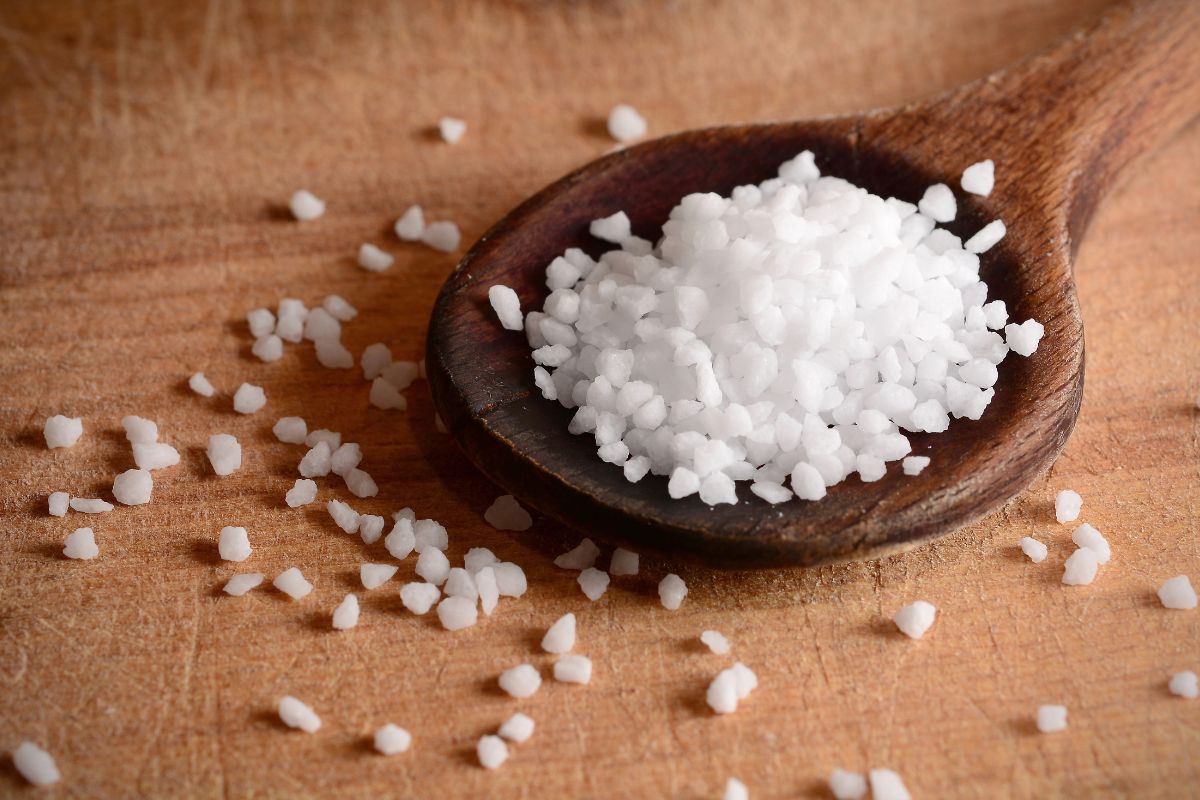
As we previously mentioned, even the slightest change in environment can cause defects in your crystals, and if a crystal grows too fast due to a change in the environment, it can become cloudy and opaque.
But, once your crystal becomes bigger, it can deal with changes much better, meaning you could potentially transfer it to a bigger dish if you want to provide your crystal with extra room to grow.
Transferring your crystal is optional, and you still run the risk not only of it clouding over, but could also potentially lead to the crystal becoming scratched or dissolving too.
When it comes to deciding when to stop growing your crystals, it’s entirely up to you!
So once you feel like your crystal has reached the perfect size, you can simply remove it from the dish using tweezers and dry it off using a paper towel, but be careful, as they will stick to the paper towel if they remain on it for too long.
You’re now done! Storing your Sodium Chloride crystals is easy enough as they’re completely stable, so simply keep them in a closed container to keep them looking as crisp and sharp as when they were first created.
Growing Slow Vs Growing Fast
A lot of people will wonder the sort of effect that the rate of growth can have on the final result of the sodium chloride crystal, or if there is any effect at all.
But the reality is that the rate of evaporation that the crystal experiences whilst growing can have a dramatic effect on how the crystal looks once it’s fully formed.
Crystals that have experienced a low rate of evaporation tend to be more transparent and uniform in shape, which is why many people aim to ensure that when they grow crystals, that they experience a low rate of evaporation as it leads to what many people believe to be the perfect crystal.
For the crystals that are subjected to a medium rate of evaporation whistling growing will have slight deformities in their shape, as well as being less transparent too, so although they might not be considered to be perfect by most, they certainly make for interesting viewing!
Finally, crystals which are exposed to a high rate of evaporation during the growth process will have highly irregular shapes, and will be completely opaque.
So if you’re looking for a crystal, you’ll want to minimize the amount of evaporation as much as possible, as these tend to appear more like rocks of salt as opposed to crystals.
Ultimately, growing perfect looking crystals takes time, patience, and experience, so don’t get too discouraged if your first few attempts fail badly, and sometimes the more irregular the crystal, the more interesting they are!
Growing Interesting Crystals
If you want to try growing something that isn’t a perfectly shaped and transparent crystal, then why not try to grow one of these interesting crystal variations!
Crystal Star
Depending on the environment, sometimes a crystal will turn cloudy at first, but later become covered in layers of more transparent crystal, which can create an interesting looking crystal star structure inside of a regular shaped crystal.
This is possible by growing your crystal in a container without limiting the amount of evaporation from the beginning, although the results are unpredictable, so this might not always work!
White Cubes
Another interesting variation you can try to grow is a white cube, these white cubes are basically crystal stars but are grown at a much faster rate, but trying to grow them is a difficult task, and requires you to strike a fine balance when growing in order to turn out like this.
If the rate of evaporation increases or decreases by even the smallest margins, or if dust particles in the dish begin to attract crystals, then it will lead to the cubes looking more like a white clump than a uniform cube shape.
If you’re looking to try this shape at home, then you need to follow the same methods as you usually would for creating a crystal, but doing so on a hot day (see also ‘Growing Crystals: How To Make Beautiful Crystals At Home‘).
Flipping the cube onto its side when transferring it to a different container is another great way of ensuring it clouds over completely.
Summary
Whilst some guides will try to tell you that this process is easy, creating your own Sodium Chloride Crystals at home can be rather difficult, especially considering how sensitive the crystals can be to even the smallest changes in their growing environment.
So, as difficult as it is, by following our guide you should hopefully be able to form your own Sodium Chloride crystals!
- 15 Crystals That Cannot Be Exposed To The Sun - January 7, 2024
- Malachite Vs Fuchsite – Benefits And Uses - January 7, 2024
- Malachite Vs. Green Jasper: Benefits And Uses - January 7, 2024

